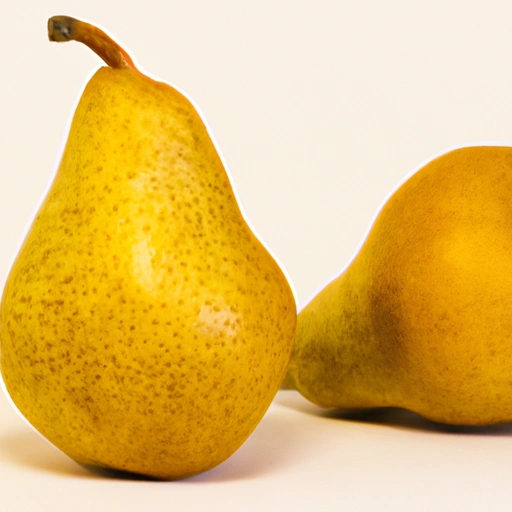Pear
Description

The pear is a sweet, bell-shaped fruit that boasts a juicy flesh, making it a popular choice for a wide range of culinary applications. With its delicate flavor, pears can be eaten fresh, canned, as jam, or cooked in various dishes. They come in several varieties, including Bartlett, Bosc, Anjou, and Asian pears, each with a unique texture and taste.
Common uses
Pears are commonly used in desserts, salads, and as a complement to cheeses and meats. They can be baked, poached, grilled, or eaten raw, depending on the recipe and the desired outcome. Their natural sweetness and soft texture make them an excellent ingredient for pies, tarts, and other baked goods, while their refreshing crispness is perfect for adding a juicy crunch to salads.
Nutritional value
Calories
An average medium-sized pear (about 178 grams) contains approximately 101 calories.
Protein
Pears contain about 0.6 grams of protein per 100 grams.
Fat
Pears are low in fat, with a medium-sized pear containing about 0.2 grams.
Carbohydrates
Carbohydrates in a medium pear total around 27 grams, which includes 17 grams of natural sugar and about 6 grams of dietary fiber.
Vitamins
Pears are a good source of vitamin C and also provide small amounts of vitamins K and A.
Minerals
This fruit contains minerals such as potassium (with about 206 milligrams per medium pear), as well as smaller amounts of calcium, magnesium, and iron.
Health benefits
Pears are rich in dietary fiber, which helps promote digestive health and regularity. The fiber content also contributes to better heart health by helping to lower cholesterol levels. The presence of vitamin C boosts the immune system, while the antioxidants found in pears can help combat free radicals and reduce inflammation.
Potential risks
Pears are generally safe for most people to eat, but those with a fructose intolerance or allergy to birch pollen might experience adverse reactions. Additionally, as with all fruits, consuming pears in excessive amounts may lead to digestive discomfort due to their high fiber content.
Common recipes
Pears are featured in a variety of recipes, from elegant pear tarts and refreshing pear sorbets to savory pear chutneys and roasted pear salads.
Cooking methods
Pears can be cooked using methods such as baking, poaching, grilling, or sautéing. They can also be preserved through canning or transformed into jams and jellies.
Pairing with other ingredients
Pears pair well with a range of flavors, including cinnamon, vanilla, nutmeg, and ginger for sweet applications, as well as blue cheese, walnuts, and arugula for savory dishes.
Summary
Pears are a versatile fruit that enhance both sweet and savory dishes with their subtle, delicate flavor. With a rich history and a plethora of varieties, they offer a bounty of nutritional benefits and culinary possibilities, making them a cherished ingredient in kitchens around the globe.